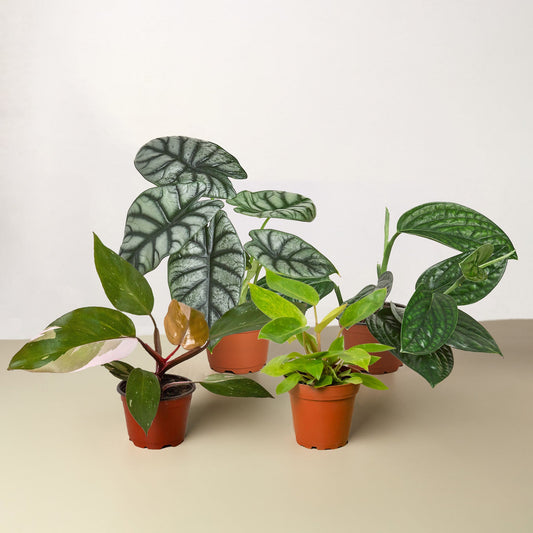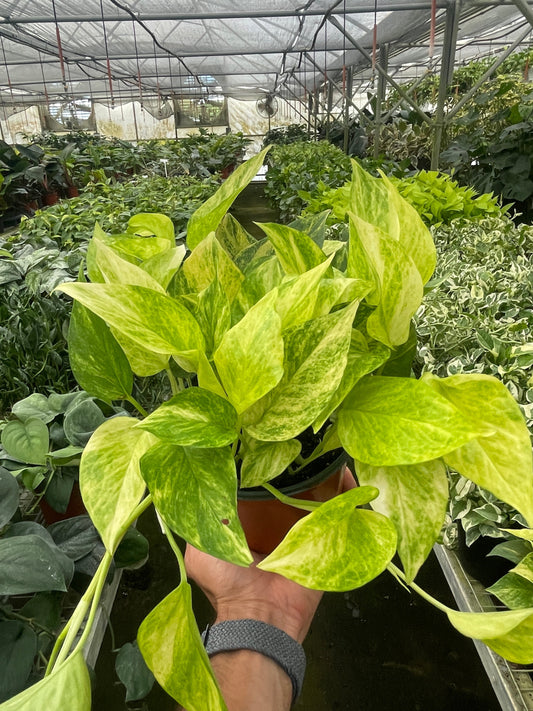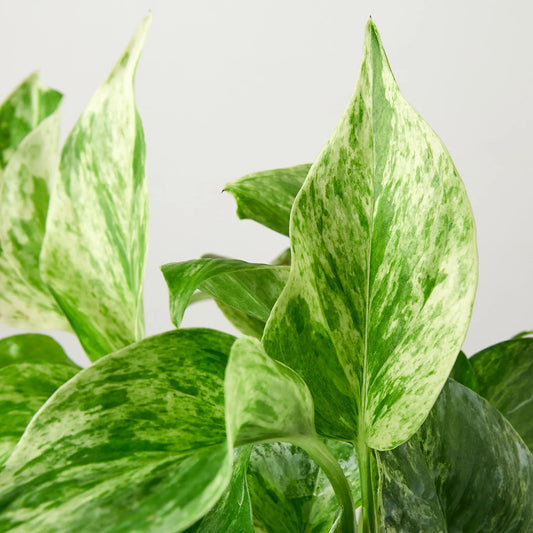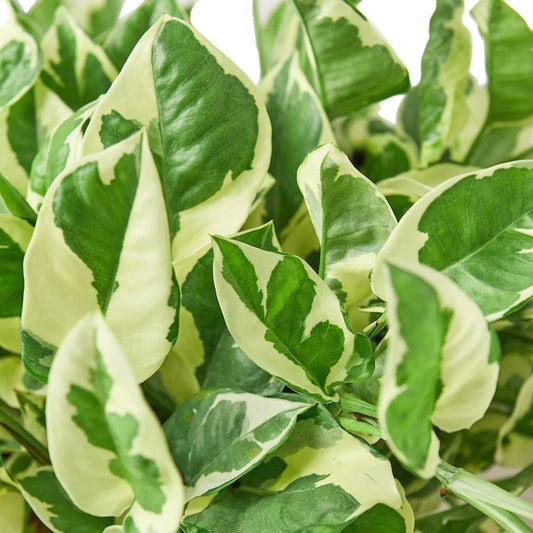How To Prune a Kalanchoe (The RIGHT Way)
Cafe Planta Team
Have you ever looked at your Kalanchoe and thought, "Wow, it's getting a little wild!"? You're not alone. These delightful plants, with their vibrant flowers and fleshy leaves, can sometimes grow in directions you never expected. Pruning is the magic trick that helps keep your Kalanchoe looking its best.
In this article, we'll chat about everything you need to know to prune your Kalanchoe the right way. We'll explore why pruning is important, when to do it, and how to tackle it step-by-step. Plus, I'll share some tips and tricks to make sure your plant stays healthy and happy. Ready to become a Kalanchoe-pruning pro?
Why Prune Your Kalanchoe?
First things first, why should you even bother pruning your Kalanchoe? It's a fair question. Pruning is like giving your plant a little haircut, and just like a haircut, it can have some great benefits.
- Encourages New Growth: By trimming back old or overgrown parts, you're telling your plant it's time to focus on new, fresh growth. This helps keep your plant looking lush and vibrant.
- Shapes the Plant: Sometimes, Kalanchoes can get a bit leggy or lopsided. Pruning helps you shape the plant to your liking, giving it a more balanced and aesthetically pleasing appearance.
- Promotes Flowering: Kalanchoes are known for their beautiful blooms. Pruning can stimulate more flowering by redirecting the plant’s energy towards producing blossoms instead of maintaining old growth.
- Removes Dead or Diseased Parts: Getting rid of dead or diseased parts is crucial for maintaining a healthy plant. It prevents the spread of disease and keeps your Kalanchoe in tip-top shape.
So, not only does pruning make your Kalanchoe look good, it also helps it stay healthy and encourages it to produce more of those lovely flowers we all adore.
When to Prune Your Kalanchoe
Timing is everything, right? When it comes to pruning your Kalanchoe, there are a few key times when it’s best to get out those pruning shears.
After Blooming
The best time to prune your Kalanchoe is right after it has finished blooming. This is when the plant enters a rest period, and pruning will encourage it to start preparing for the next flowering cycle. Waiting until after the blooms fade ensures that you're not cutting off any potential flowers before they have a chance to shine.
During the Growing Season
Kalanchoes are most actively growing during the warmer months. If you notice your plant is getting too tall or leggy, you can do a bit of light pruning during this time. Just be careful not to overdo it, as the plant needs its leaves to photosynthesize and gather energy.
Removing Dead or Diseased Parts
If you spot any dead or diseased parts on your plant at any time of year, it's best to remove them right away. This helps prevent the spread of disease and keeps your plant looking its best.
So, remember: after blooming for a general prune, during the growing season for light shaping, and anytime for getting rid of unhealthy parts. With this timing in mind, you're all set for success.
Getting Your Tools Ready
Before you start snipping away, it’s important to have the right tools on hand. Pruning is a precise art, and the proper tools will make the job easier and more effective.
- Sharp Pruning Shears: A good pair of sharp pruning shears is a must. Dull blades can crush the stems instead of cutting them cleanly, which can damage your plant.
- Sanitizing Solution: Keeping your tools clean is crucial to prevent the spread of disease. You can use rubbing alcohol or a solution of one part bleach to nine parts water to sanitize your tools before and after each use.
- Gloves: Although not strictly necessary, gloves can protect your hands from the plant's sap, which can sometimes be irritating.
Having these tools ready will set you up for a smooth and effective pruning session. Plus, you'll feel like a pro gardener with your well-equipped toolkit!
The Step-by-Step Pruning Process
Now, let's get down to business. Here's a step-by-step guide to pruning your Kalanchoe like a pro. Take your time, and remember, it's all about encouraging your plant to be its best self.
Step 1: Inspect Your Plant
Before you make any cuts, take a good look at your Kalanchoe. Identify any dead, damaged, or diseased parts that need removal. Also, note any areas where the plant is growing unevenly or too densely.
Step 2: Make the First Cut
Start by removing any dead or diseased leaves and stems. Make your cuts just above a leaf node (the point where a leaf joins the stem). This encourages new growth from that point.
Step 3: Shape the Plant
Next, consider the overall shape of your plant. If it's too tall or leggy, trim back some of the longer stems to create a more balanced look. Again, cut just above a leaf node.
Step 4: Encourage Bushiness
To encourage your Kalanchoe to grow bushier, pinch back the tips of the stems. This is especially helpful if your plant is looking a bit sparse. Pinching stimulates the plant to send out more side shoots, leading to a fuller appearance.
Step 5: Clean Up
Once you've finished pruning, take a moment to clean up any fallen leaves or stems. This helps prevent pests and diseases from taking hold in the debris.
With these steps, your Kalanchoe will be on its way to looking fabulous in no time.
Common Pruning Mistakes to Avoid
Even the best of us make mistakes, but with a little guidance, you can avoid some common pitfalls when pruning your Kalanchoe.
- Over-pruning: It's easy to get carried away, but remember that your plant still needs leaves to gather energy. Avoid cutting more than one-third of the plant at a time.
- Cutting at the Wrong Time: As mentioned earlier, timing is crucial. Avoid heavy pruning during the dormant season, as this can stress the plant.
- Ignoring Tool Sanitation: Dirty tools can spread disease from one plant to another. Always sanitize your tools before and after pruning.
- Improper Cutting Technique: Make clean cuts just above a leaf node. Ragged or jagged cuts can invite disease and slow down the healing process.
By keeping these tips in mind, you'll avoid the most common pitfalls and help your Kalanchoe thrive.
Caring for Your Kalanchoe Post-Pruning
Congratulations, you've successfully pruned your Kalanchoe! But what now? Post-pruning care is essential to ensure your plant bounces back quickly and starts growing beautifully.
Watering
After pruning, your plant might need a little extra water, but be careful not to overdo it. Kalanchoes are succulents, so they prefer their soil to dry out a bit between waterings. Check the top inch of soil—if it's dry, it's time for a drink.
Light
Make sure your Kalanchoe gets plenty of bright, indirect light. Good lighting will help the plant recover and start producing new growth. If your plant is inside, a spot near a sunny window is ideal.
Feeding
Consider giving your plant a little fertilizer boost to aid recovery. Use a balanced, water-soluble fertilizer once a month during the growing season. This can give your plant the nutrients it needs to produce new growth and blooms.
With these care tips, your Kalanchoe will be on the fast track to recovery after its pruning session.
Designing with Kalanchoe
Kalanchoes aren't just easy to care for—they're also incredibly versatile when it comes to home decor. Their bright colors and interesting textures can add a touch of nature to any room.
Colorful Accents
Kalanchoes come in various colors, from vibrant pinks to sunny yellows. Use them as colorful accents in your living room or kitchen to brighten up the space. They can serve as focal points on a windowsill or as part of a larger plant arrangement.
Pairing with Other Plants
Because Kalanchoes are succulents, they pair well with other low-water plants. Consider combining them with other succulents like jade plants or aloe for a cohesive look. You can also mix them with non-succulents, provided the watering needs are compatible.
Container Choices
Don't underestimate the power of a good container. Choose a pot that complements your decor style—whether it’s modern, rustic, or something in between. Kalanchoes look stunning in ceramic pots, terracotta, or even repurposed containers for a quirky twist.
With a bit of creativity, your Kalanchoe can become a standout feature in your home decor.
Dealing with Pests and Problems
Even the best-kept Kalanchoe can run into a few issues. But don't worry, most problems are easily solved with a little know-how.
Common Pests
Kalanchoes can occasionally attract pests like aphids, mealybugs, and spider mites. If you notice any unwelcome visitors, a gentle spray of water or a dab of insecticidal soap usually does the trick. Just make sure to follow the instructions on the product label.
Fungal Issues
Overwatering can lead to fungal problems like root rot. Ensure your pot has good drainage, and let the soil dry out between waterings. If you suspect root rot, remove the plant from its pot, trim away any rotting roots, and repot in fresh soil.
By staying vigilant and addressing problems early, you'll keep your Kalanchoe healthy and thriving.
Propagation: Creating More Kalanchoes
Love your Kalanchoe so much you want more? Good news—propagating Kalanchoes is a straightforward process. It's a fun way to expand your plant collection or share with friends.
Step-by-Step Propagation
- Take a Cutting: Use a clean, sharp knife to take a cutting from a healthy stem. Aim for a piece that's 2-4 inches long with at least one leaf node.
- Let it Callous: Allow the cutting to dry out for a day or two. This helps prevent rot when you plant it.
- Planting: Place the cutting in a small pot with well-draining soil. Water lightly and place in a bright, indirect light spot.
- Care: Keep the soil slightly moist but not soggy. In a few weeks, you should see new growth, which means roots are developing.
With a little patience, you'll have a new Kalanchoe ready to grow and thrive.
Final Thoughts
Pruning your Kalanchoe doesn't have to be a daunting task. With the right tools, timing, and techniques, you can keep your plant looking beautiful and healthy. Remember to prune after blooming, sanitize your tools, and avoid over-pruning. With these tips, your Kalanchoe will thrive.
At Cafe Planta, we’re passionate about plants and love helping people care for them. Whether you're looking for new houseplants, plant care accessories, or just some advice, we’re here for you. Feel free to email us, or reach out via Instagram. Let's grow together!



















